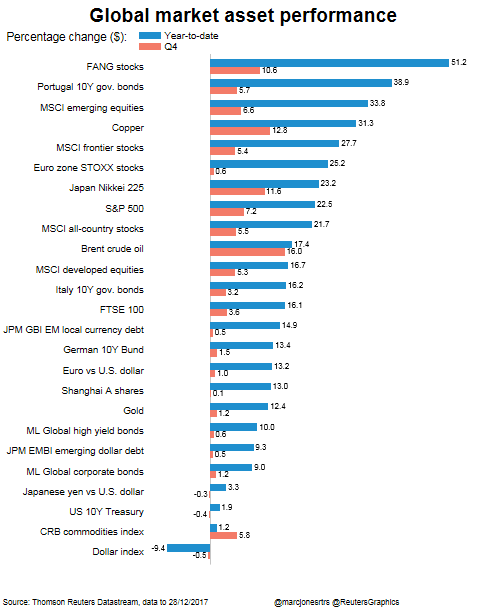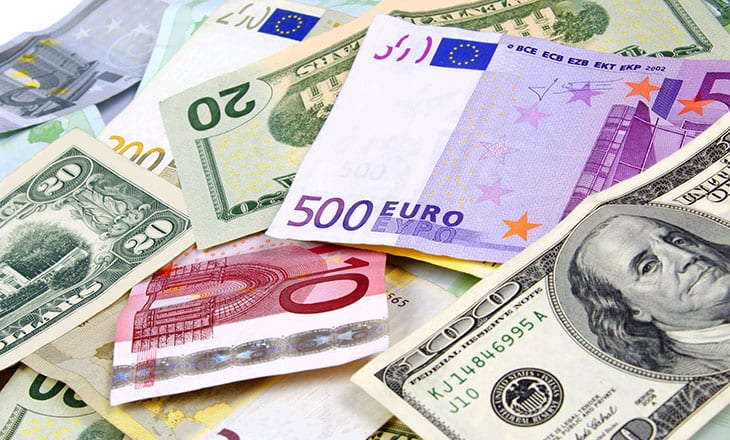The dollar fell to its lowest in over three months on Tuesday, while surprisingly upbeat Chinese manufacturing data ensured there was no serious new year hangover for world shares despite a groggy start for Europe, Reuters reported earlier today.
Sentiment was also helped by news that North Korea had offered an olive branch to South Korea, with Kim Jong Un saying he was “open to dialogue” with Seoul.
MSCI‘s broadest index of world shares climbed 0.15 percent, having set scores of record highs and risen by one-fifth in value last year alone. The driver had again been Asia and its emerging markets.

Source: Reuters
Shanghai blue chips climbed 1.4 percent and MSCIs 24-country EM index jumped over 1 percent after the Caixin index of Chinese industry rose to a four-month high of 51.5 in December, confounding forecasts for a decline.
The reading pointed to resilience in the world’s second-largest economy even as Beijing cracks down on industrial pollution and engineers a cooling property market.
In currency markets, the dollar remained out of favor having already hit a three-month low against a basket of its peers on Friday. That brought its losses for 2017 to 9.8 percent, its worse performance since 2003.
The euro’s gain though, with the single currency enjoying its strongest year against the dollar in 14 years.
On Tuesday, it jetted to a three-month top of $1.2045 as data showed that euro zone manufacturers had ramped up activity last month at the fastest pace in more than two decades.
It had already sliced through major resistance on the yen in Asia too, reaching highs not seen since late 2015 at 135.45 yen.
The pound, Swiss franc and Scandinavian currencies were also up solidly against the dollar.
That combined with a two-month high in bond yields in Germany and Italy, two of the euro zone’s biggest debt markets, pushed stock markets in London, Frankfurt and Paris 0.3-0.6 percent into the red.
A major hurdle for the U.S. currency will be Wednesday’s release of minutes from the Federal Reserve’s December meeting when it raised interest rates. Two policymakers voted against the move amid doubts inflation would accelerate as hoped.
With the market now pricing in a 68 percent chance of a March hike and two hikes for 2018, there will be close inspection to assess just how shaky their confidence is for any pick-up in inflationary trends said Chris Weston, chief markets strategist at broker IG in Sydney.
The skid in the dollar, combined with strength in Chinese demand, has benefited commodities priced into the currency.
Copper dipped back a little on Tuesday to $7,223.50 a tonne, but that follows a rise of 31 percent in 2017 to a four-year top. Aluminium amassed gains of 34 percent.
Gold was 0.37 percent firmer at $1,310 an ounce, after advancing by 13 percent in 2017 for its best performance in seven years.
Brent crude oil futures ended the year with a 17 percent rise, while U.S. crude climbed 12 percent on strong demand and declining global inventories.
On Tuesday, Brent dipped a few cents at $66.85 a barrel, while U.S. crude firmed 3 cents to $60.47.
